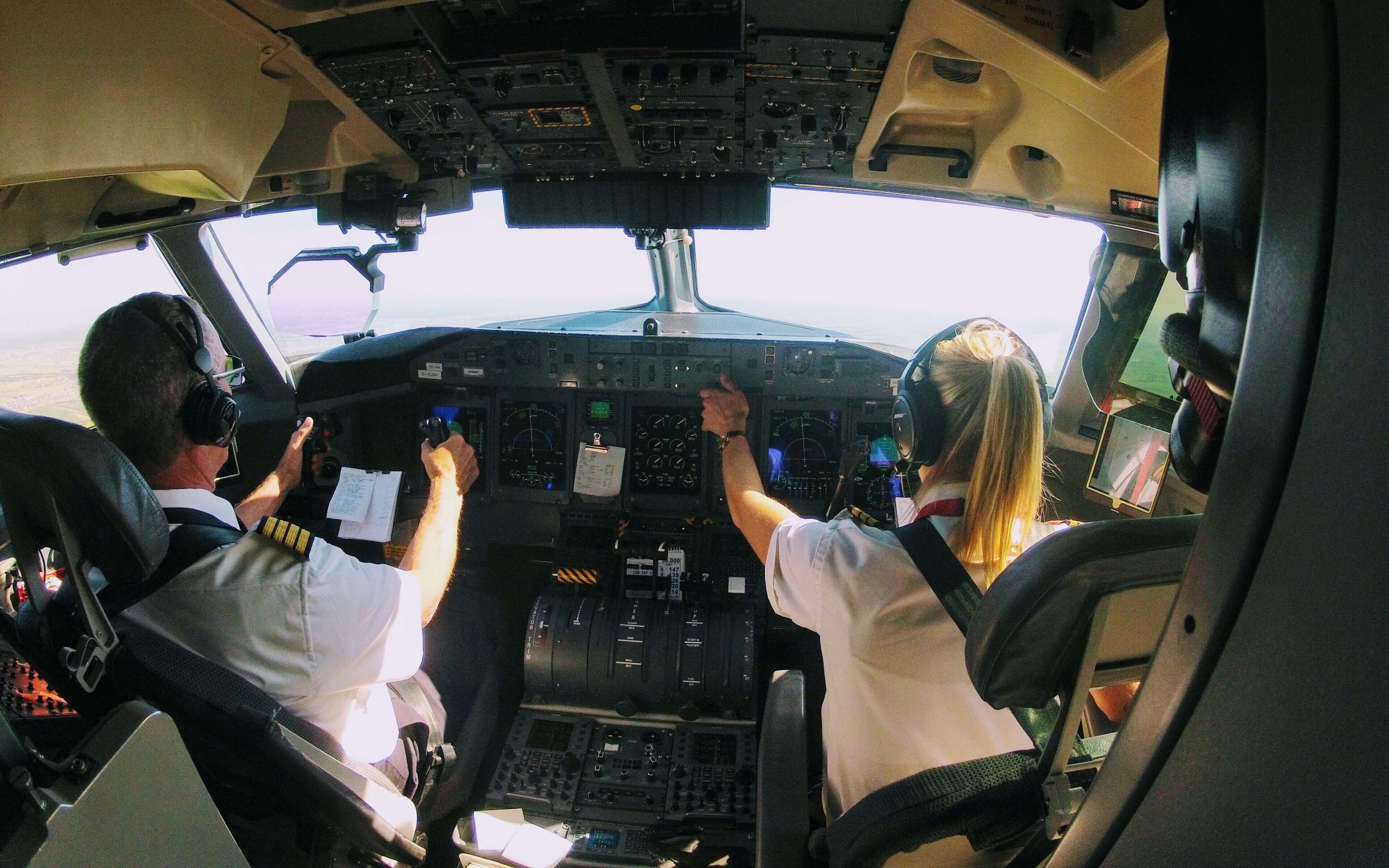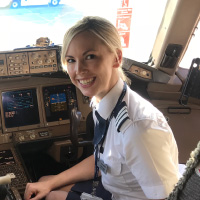Estimated reading time 7 minutes, 2 seconds.
Editor’s note: Lola Reid Allin is a writer, photographer, adventurer and commercial pilot based in Belleville, Ont. This is part 4 of a 5-part series by Lola about the under-representation of women in commercial aviation. Click to read part 1, part 2 and part 3.
In the report, “2010 Human Resource Study of the Commercial Pilot in Canada,” prepared for the Canadian Aviation Maintenance Council (now called the Canadian Council for Aviation and Aerospace, CCAA), male and female student pilots and licensed pilots reported that travel opportunities, adventure and prestige not experienced by the larger population had lured them to a career in aviation.

While flying the skies is romantic at face value, downfalls of the profession include exorbitant training costs compared to realized salary; job security; attitude of superiority displayed by captains and employers toward new pilots (male or female); and lifestyle with long hours often with nights away from home.
The successful commercial pilot graduate will have spent a minimum of $16,000 before any aviation company will consider giving her any pilot job. If she has recently received her commercial pilot license and has no other ratings or certificates, her first job will not be with an international airline located in a major metropolis, but perhaps with a small air carrier in an isolated region working long hours for minimal pay.
If, after receiving her commercial license, she chooses to spend a minimum additional $6,500 for a flight instructor rating, she opens the avenue of teaching at a flight school — again working long hours for minimal pay. A Canadian instructor with one to four years of experience earns an hourly average of $25.26, an instructor with five to nine years of experience earns $30/hour, and an experienced, 20-year veteran Class I Instructor, $44/hour.
Even then, she won’t be employable at a regional air carrier until she spends another $7,000 to acquire a multi-engine, instrument flight rating. When she gets at least 1,000 hours of flight experience, preferably with turbine time, acquired over a two-to-10 year period, only then will a major air carrier become interested.
In Canada, a unique four-year program jointly hosted by the University of Waterloo and the Waterloo-Wellington Flight Centre enables successful candidates to graduate with a bachelor of science or bachelor of environmental studies and a commercial license endorsed for multi-engine IFR. An average estimated cost for four years of university tuition is $40,000 plus $80,000 for flight training. First-year classes typically have 35 to 45 students but only a fraction graduate from this joint program. When one successful candidate began her studies in 2014, she was one of eight females in a class of 45 students; two females and 10 males graduated.
Whether you are male or female, if you love to fly and have the right combination of dedication, determination, a university degree or diploma from an aviation college, the required advanced pilot licenses, and have accumulated several hundred hours of flight time, you will likely land an airline job — if airlines are hiring. If your timing is not quite right, be prepared to spend many years instructing and/or flying for regional air carriers, and on wheels, skis, or floats for bush plane operators.
From personal experience during the years I spent in the aviation industry beginning in 1979, an instructor, charter pilot, or regional airline pilot can anticipate a starting salary range between $20,000 to $25,000. For all but the instructing category, you’ll be required to keep an overnight bag ready for action at any time. While your family and friends are asleep, you’ll be begging your rattletrap clunker to respond in bitter -20 C (-4 F) weather, so you can drive to a desolate airport, illuminated by a solitary beacon piercing the night sky, where you and another pilot will prepare for a midnight medevac flight.

The early years in aviation for several of my friends and three of the women who participated in my study for this report mirrored my experience: our jobs were located in remote or isolated areas, did not pay well, and were physically demanding as we doubled as baggage handlers at remote airstrips.
But — wait a minute — these conditions apply to all pilots, not just female pilots.
The current crop of female pilots rejects the idea that the hours and time away from home put women off a career as a commercial pilot. “It’s the same working lifestyle as cabin crew, and we have 15,000 cabin crew, the majority of whom are female,” said British Airways captain Cliodhna Duggan in an article written by Emine Saner for The Guardian.
Saner also interviewed British Airways captain Aoife Duggan, sister of Cliodhna, who had shepherded two interested children onto the flight deck. Captain Duggan was pleased the boy demonstrated interest in aviation but was aghast to hear the six-year-old girl demur, “I think I’d like to be an air hostess. Boys are pilots.” Though face-to-face with an adult female pilot in uniform, seated in the captain’s seat, and enveloped by the flight deck’s bells-and-whistles, social conditioning had created a young girl who couldn’t visualize herself as a pilot.
Captain Dave Thomas, British Airways chief pilot and director of flight training, has determined to change attitudes of pilots and passengers. Until 2011, five per cent of British Airways pilots were female, a percentage consistent worldwide. Since then, the airline has actively recruited women. In 2014, 5.71 per cent of their pilots were female (200 of 3,500); in 2020, 5.86 percent are female (245 of 4,180). Captain Thomas said, “What we’re after is the best person for the job and if we’re only looking at half the population, then we’re clearly missing a trick.”








